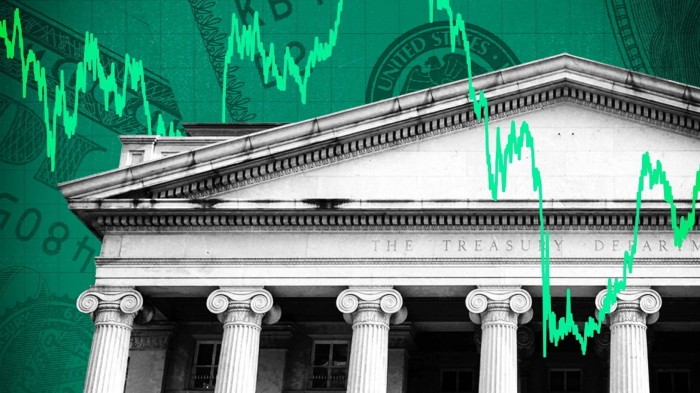Stay informed with free updates
Simply sign up to the US economy myFT Digest — delivered directly to your inbox.
The close relationship between US government bond yields and the dollar has broken down as investors cool on American assets in response to President Donald Trump’s volatile policymaking.
Government borrowing costs and the value of the currency have tended to move in step with each other in recent years, with higher yields typically signalling a strong economy and attracting inflows of foreign capital.
But since Trump’s “liberation day” tariffs were announced in early April, the 10-year yield has risen from 4.16 per cent to 4.42 per cent, while the dollar has dropped 4.7 per cent against a basket of currencies. This month, the correlation between the two has fallen to its lowest level in nearly three years.
“Under normal circumstances, [higher yields] are a sign of the US economy performing strongly. That’s attractive for capital inflows into the US,” said Shahab Jalinoos, head of G10 FX strategy at UBS.
But “if the yields are going up because US debt is more risky, because of fiscal concerns and policy uncertainty, at the same time the dollar can weaken”, he said, a pattern that was “more frequently seen in emerging markets”.
The president’s “big, beautiful” tax bill, along with the recent Moody’s downgrade of the US’s credit rating, has brought the sustainability of the deficit into sharper focus for investors and weighed on bond prices.
Analysis by Torsten Sløk, chief economist at Apollo, suggested that US government credit default swap spreads — which reflect the cost of protecting a loan against default — are trading at levels similar to Greece and Italy.
Trump’s attacks on Federal Reserve chair Jay Powell have also spooked the market. The president summoned Powell to the White House this week and told the central banker he was making a mistake in not cutting interest rates.
“The strength of the US dollar comes partly from its institutional integrity: the rule of law, independence of central banking and policy that’s predictable. These are the components that create the dollar as the reserve currency,” said Michael de Pass, global head of rates trading at Citadel Securities.
“The last three months have called that into question,” he said, adding that “a major concern for markets right now is whether we are chipping away at the institutional credibility of the dollar”.
The divergence between Treasury yields and the dollar represents a marked shift from the pattern of recent years, when expectations about the direction of monetary policy and economic growth had been crucial drivers of government borrowing costs.
The new pattern could increase risks for investors seeking haven assets, said Andreas Koenig, head of global FX at Amundi.
“This changes everything. In the last few years, having the dollar long in the portfolio . . . was a very good stabilising factor,” he said. “When the dollar is a balancing factor, you have a stable portfolio. If all of a sudden the dollar is correlated, it increases the risk.”
Investors were questioning whether there had been a fundamental shift in correlations between asset classes, Goldman Sachs analysts wrote in a note on Friday.
“It is in the newer worries around . . . Fed independence and fiscal sustainability where the asset pattern looks most clearly different,” they wrote.
“The recent phenomenon of dollar weakness alongside higher yields and lower equity prices . . . has posed a challenge to both of the common portfolio hedges,” the Goldman analysts added.
The weaker US currency is partly down to holders of dollar-denominated assets increasingly looking to hedge those investments, taking a short position in the dollar in the process.
“The more policy uncertainty there is, the more likely it is that investors will raise their hedge ratios,” said UBS’s Jalinoos.
“If hedge ratios increase on the existing stock of dollar assets, you’re talking about many billions of dollars of selling [the US dollar],” he added.
The Goldman analysts suggested that investors should position for dollar weakness, especially against the euro, yen and Swiss franc, all of which have risen in recent months. They added that “these new risks create a strong basis for some allocation to gold”.
Additional reporting by Louis Ashworth
https://www.ft.com/content/9ca05517-b3fb-46f1-9cde-866061e816a7



